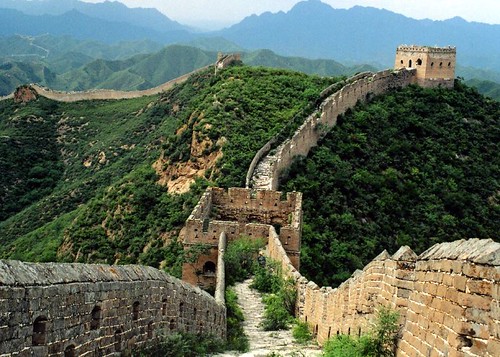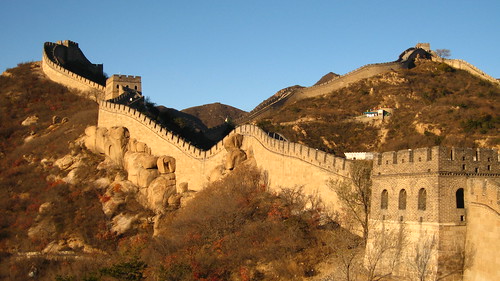Adopting the well-established administrative systems of the Northern Zhou, the Sui proceeded to bring down the Chen Dynasty of the Northern and Southern Dynasties and so created a united China and bringing to an end an era of chaos that had endured for 270 years. Following unification, the feudal separatism that had lasted in China for four hundred years also came to an end.
The new imperial government set about the prevention of invasion from the northern nomadic peoples such as the Turkic People and Qidan People. In 583, the Turkic People, a nomadic tribe that inhabited land to the north of the Sui territory, split into the Eastern and the Western factions due to inner confliction. However, the Turkic tribe continued to attack the Sui's northern boundary.
great wall of china

great wall of china

A labor force numbering many hundreds of thousands was gathered to work on the construction of the Great Wall. Historical records show us that the Sui Dynasty undertook six such major construction projects in total.
Four construction projects were completed during the reign of Emperor Wendi.
1). In April of 581, the first section of the Sui Dynasty Great Wall was built. This project took only twenty days but in December, the eastern sections of the Great Wall attributable to the Northern Wei and the Northern Qi were repaired.
2). Historical research shows that a section was started in 585 from the east bank of the Yellow River near Lingwu County in Ningxia Hui Autonomous Region, through Hengshan County to Suide County of Shaanxi Province. This ran for about 350 kilometers (217 miles) from west to east.
3). In 586, a twenty-day repair was undertaken. In addition, construction of several fortresses was commenced along the Great Wall to the east of present Hengshan County of Shaanxi Province in order to protect the Sui border in that region.
4). In 587, a further section of the Great Wall was constructed but there is no surviving record providing detailed information about this.
When Emperor Yangdi came to the throne in 604, he instigated two more Great Wall construction projects.
1). During 607, a labor force of millions was levied to extend the Great Wall from the east of today's Youyu County of Shanxi Province to the southwest of Toketo County of Inner Mongolia.
2). The other section commenced at Xining City of Qinghai Province in the west, but the location of the eastern extremity of this section is not recorded.
These two sections of the Great Wall had no strategic purpose beyond displaying the military power that prevailed during the rule of Emperor Yangdi.
great wall of china
